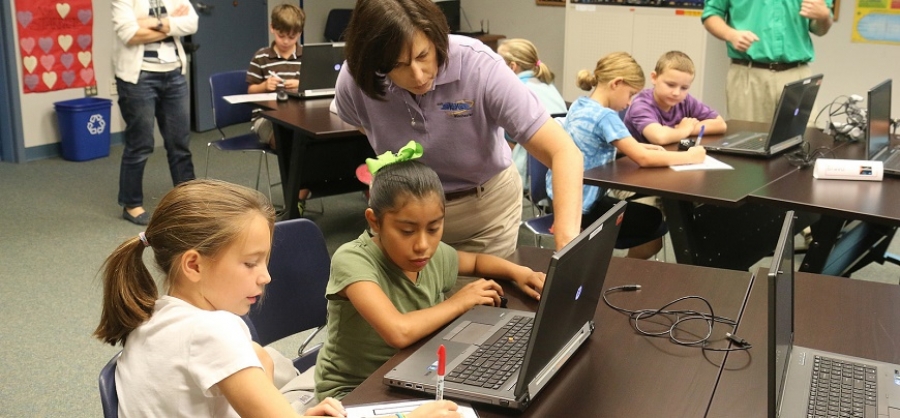But how exactly can technology help with this? Schools are increasingly using computers and other technology to raise standards in the classroom, so why not use it to improve standards in other areas too? Most school improvement and performance management processes have traditionally been conducted on paper, and more often than not, only take place at an annual appraisal or interim performance meeting, with evidence only being collated before these events. What technology can offer is the potential for the school improvement plan to become a living document, constantly updated and tied into the performance management records of individual staff members, meaning that everyone feeds into its development.
Self-evaluation is a key “The school improvement plan can become a living document.”factor in spurring school improvement, as through this, schools will be able to identify strengths and areas for development, before establishing a list of priorities for the year. This process, with input from senior leaders, teachers, governors and even pupils and parents, should establish a comprehensive picture of the school’s overall effectiveness. Schools can then use a central, online system to gather evidence around these priorities, all focused around this initial self-evaluation and the school’s improvement planning.
One of the trends that has been prominent of late is the use of social media. Schools are using Facebook and Twitter to shout about their achievements, but there are also ways in which schools can make use of a similar model in a professional context. For example, setting up a channel where teachers and their line managers can discuss development goals and progress online means that they can be in constant contact, without necessarily needing to wait for a face-to-face meeting. Not only does this allow teachers to address issues in real-time, it also forms a record of these conversations. Schools can then demonstrate evidence against the Ofsted framework so that they provide “performance management that leads to professional development that encourages, challenges and supports teachers’ improvement”.
This form of communication can also be useful between teachers when it comes to continual professional development (CPD). It provides a platform for sharing best practice and advice, where staff members can learn from each other. In addition, the school can integrate its management of external CPD courses, and teachers can swap notes about which sessions they found helpful and other useful tips about the training. This means that the school can develop an understanding of what is out there, and more importantly how effective it is, so that they don’t send multiple staff members on the same course with no real long-term impact.
Another key trend of course is the increased use of tablets and smartphones by teachers, both in the classroom and as tools for administration. The use of these devices has meant that teachers can be more flexible in the way that they work, and connecting these into a central system allows them to upload and access materials whenever and wherever they are. This frees up valuable time that might have otherwise been spent at a desk or a photocopier, sifting through pages of written work and reports. It also diversifies the type of evidence that teachers can “Edtech diversifies the type of evidence that teachers can provide.”provide; for example, if an English class is working on a dramatic project, the teacher can record videos of their performances, that otherwise would have gone unrecorded, or simply written as notes in exercise books. By giving teachers the option to capture a range of evidence using images and video, they can demonstrate the work they are proud of as part of a visual portfolio. This will inspire teachers to share their best practice, and for school leaders, this means that they have access to a wealth of fantastic examples from their teachers when it comes to inspections.
Again, from a senior leadership perspective, using an online system means that they can monitor the progress of the school in a number of ways. They can look at the overarching metrics of the entire staff body, or they can drill into the details of an individual’s performance. Schools want to be able to provide accessible and valuable support for staff. By having technology at their fingertips, teachers can streamline practices even further, meaning that they can focus on providing the right kind of evidence to fulfil their objectives and perform effectively to benefit both themselves and the whole school.
Do you employ any of these tactics? Let us know below.


















